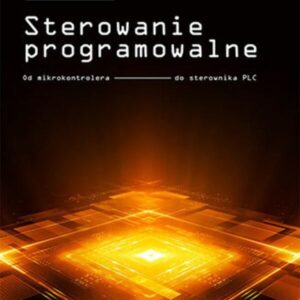Opis
SAP Intelligent Robotic Process Automation (RPA) enables businesses to automate repetitive work and integrate automation capabilities across SAP and non-SAP systems.This book provides end-to-end coverage of business process automation using SAP Intelligent RPA and shows how to build multiple SAP Intelligent RPA projects from start to finish. Some of these projects may build upon the work done in previous chapters to showcase the Agile development process in SAP Intelligent RPA.As you progress, youll cover the SAP Intelligent RPA factory, Desktop Studio, Cloud Studio, and the Bot store. Youll also learn about the building blocks of the SAP Intelligent RPA solution and creating bots from initial application declaration to workflow design and deployment, along with making bots run in attended and unattended modes.Youll also learn about SAP Process Automation, the new SAP service that is going to replace the SAP Intelligent RPA service soon. Finally, we will discuss the migration path for your SAP Intelligent RPA projects to SAP Process Automation and showcase that the RPA development remains similar in both services.By the end of this RPA book, youll be able to create and manage complex bots that are capable of interacting with SAP and non-SAP systems. Spis treści:SAP Intelligent RPA for DevelopersContributorsAbout the authorsAbout the reviewersPrefaceWho this book is forWhat this book coversDownload the color imagesConventions usedGet in touchShare Your ThoughtsPrologue SAP Process Automation ServiceUnderstanding the SPA serviceTransitioning to SPA from SAP Intelligent RPAWhere to begin and look for help when neededSummaryPart 1: Introduction to SAP Intelligent Robotic Process AutomationChapter 1: SAP Intelligent RPA Architecture and ComponentsTechnical requirementsA brief history of SAP Intelligent RPAWhy is this important?The core components of SAP Intelligent RPACloud componentsOn-premises componentsThe relationship between Intelligent RPA componentsWhy SAP Intelligent RPA?Where to find help when neededSummaryQuestionsChapter 2: An Overview of SAP Intelligent RPA Cloud FactoryTechnical requirementsEnvironmentsAgents and agent groupsProjects and packagesTriggersMonitoringConfigurationSummaryQuestionsChapter 3: Installing SAP Intelligent RPA On-Premise ComponentsTechnical requirementsSupported operating systemsMinimum system and network requirementsSupported browsersSupported technologies for automationInstalling SAP Intelligent RPA on-premise componentsInstallation procedureInstalling Remote Tools for Visual StudioInstallation procedureInstalling a source code comparison toolInstallation procedureSupported languagesSummaryQuestionsChapter 4: Setting Up SAP Intelligent RPA On-Premise ComponentsTechnical requirementsRegistering the Desktop Agent tenantProcedure for registeringConfiguring the web browser extensionGoogle ChromeMicrosoft Internet ExplorerMicrosoft EdgeVerifying the installation of on-premise componentsSummaryQuestionsChapter 5: An Overview of Desktop StudioTechnical requirementsIntroduction to perspectives in Desktop StudioIntroduction to the Explorer perspective capturing applicationsIntroduction to the Workflow perspective connecting applications to create automationIntroduction to the Editor perspective developing automation furtherIntroduction to the Debug perspective testing automation and making tweaksIntroduction to the UI Designer perspective developing visual add-ons (optional)SummaryQuestionsChapter 6: An Overview of Desktop AgentTechnical requirementsHow Desktop Agent worksExploring the Desktop Agent tabsCommon issues and their resolutionsSummaryQuestionsPart 2: Installing and Setting Up SAP Intelligent RPAChapter 7: An Overview of Cloud StudioTechnical requirementsCloud Studios place in the SAP Intelligent RPA worldDesigning automation solutions with Cloud StudioReusing packages from Desktop Studio in Cloud StudioDeploying packages and projects from Cloud StudioSummaryQuestionsChapter 8: An Introduction to SAP Spotlight and SignavioTechnical requirementsIntroducing SAP SpotlightWhat is SAP Spotlight?How to use a Spotlight reportIntroducing SignavioSAP Process Manager by SignavioSAP Process Intelligence by SignavioSAP Workflow Accelerator by SignavioSAP Process Collaboration Hub by SignavioSummaryQuestionsPart 3: Developing Bots with Desktop StudioChapter 9: Desktop Studio PerspectivesTechnical requirementsThe Explorer perspectiveThe Applications panelThe Display panelThe Parameters panelThe Recognition panelThe Track Events panelThe Text panelThe Criteria panelThe Captured Data panelThe Subtree panelThe Workflow perspectiveThe Workflows panelThe Workspace/Workflow Designer panelThe Context panelThe Events panelThe Properties panelThe Activities panelThe UI Designer perspectiveThe UI Designer panelThe Designer View panelThe Code Map panelThe Find Results panelThe Properties panelThe Editor perspectiveThe Scripts panelThe Document Editor/Code Editor panelThe Page Viewer panelThe Bookmarks panelThe Breakpoints panelThe To-Do List panelThe Code Map panelThe Find Results panelThe Error list panelThe Debug perspectiveThe Events panelThe Pages panelThe Scenarios panelThe Filter panelThe Tester panelThe Screenshots panelThe Page Viewer panelThe Details panelThe Context panelSummaryQuestionsChapter 10: Creating and Managing ProjectsTechnical requirementsCreating a new project and updating projectsExploring the project structure and folder organizationEditing project detailsArchiving a projectExporting a project for deployment into the SAP Intelligent RPA tenantSummaryQuestionsChapter 11: An Introduction to Technology ConnectorsTechnical requirementsIntroduction to technology connectorsThe Win32 connectorThe Web connectorThe UI Automation connectorThe SAP GUI connectorEnabling SAP client-side scriptingEnabling SAP server-side scriptingThe SAPUI5 and S/4HANA connectorThe Java/SWG connectorThe HLLAPI connectorThe OCR connectorSummaryQuestionsChapter 12: Capturing and Declaring Applications, Pages, and ItemsTechnical requirementsStarting your first automation projectCapturing applications and pagesCapturing SAP Logon applicationCapturing the SAP Logon application pagesCapturing the SAP pageDefining the criteria for applications and pagesDefining the criteria for the SAPLogon760 applicationDefining the criteria for the pagesDefining UI elements/controlsDefining controls under the pWindowSAPLogon76 pageDefining controls under the pSAP pageDefining controls under the pSAPEasyAccessU pageDefining controls under the pEnterVendorInvoice pageDefining the controls under the pGuiBasicData subpageDefining the controls under the pGuiTax subpageVariable declarationSummaryQuestionsChapter 13: Designing ScenariosTechnical requirementsCreating your first workflowActivities to handle applicationsActivities to handle pages and page transitionsLogging in to the SAP serverPosting a vendor invoiceLogging off from the SAP serverActivities to interact with UI controlsAdding a Click activity to a controlSetting text values to a controlSending a Keystroke activity to a pageSetting a value from a variable to a controlGetting a value from a control to store in a variableSummaryQuestionsChapter 14: Advanced Criteria DefinitionTechnical requirementsSetting parameters for advanced recognitionThe Must Exist parameterThe Must Not Exist parameterThe Ancestor parameterThe Labelled By parameterRefining criteria in the Criteria panelDefining criteria using operatorsAdding the parent hierarchy to criteriaCapturing repeated elementsSummaryQuestionsChapter 15: Controlling Workflows and ScenariosTechnical requirementsCreating reusable scenariosSAP Login subprocessThe SAPPostVendorInvoice subprocessThe SAPLogoff subprocessCreating the SAPLogin workflowCreating the SAPLogoff workflowCreating a workflow with loops and conditional flowsAdding loops to the workflowUpdating the SAPPostVendorInvoice workflow with a loopAdding a conditional flows to the workflowUpdating the SAPPostVendorInvoice workflow with conditionsReusing scenarios and passing dataSummaryQuestionsChapter 16: Designing Custom Pages with UI DesignerTechnical requirementsCreating custom pagesDesigning custom pagesUsing the custom pages in a workflowSummaryQuestionsPart 4: Generating and Updating the JavaScript CodeChapter 17: Generating CodeTechnical requirementsBuilding the project to generate the source filesIntroducing the SDKExploring source code structure and source filesRelating the generated source code with declarationsStructure of the source code generated for a workflowSummaryQuestionsChapter 18: An Introduction to Desktop SDKTechnical requirementsExploring the Desktop SDK core classesUsing the constants defined in SDKAccessing the SDK libraries from the source codeUnderstanding the SSO classSummaryQuestionsFurther readingChapter 19: SDK Extension LibrariesTechnical requirementsUsing the Microsoft Office extensionsReading and replying to Outlook emailsCreating and sending emailsProcessing data from an Excel fileUnderstanding the Microsoft Word extension libraryExtracting information from PDF documentsLearning about the technology-specific extensionsSummaryQuestionsFurther readingChapter 20: Managing Environment VariablesTechnical requirementsCreating environment variablesReading environment variablesSummaryQuestionsFurther readingPart 5: Building and Running ProjectsChapter 21: Building ProjectsTechnical requirementsRevising the Vendor Invoice Posting projectProcessing unread emails subprocessProcessing Excel attachments subprocessLogging into SAP subprocessPosting vendor invoice in SAP subprocessSending process summary email subprocessLogging off from SAP subprocessIntegrating the workflows into a single workflowPreparing the environment and building the projectIncluding the SDK extensions in the projectCreating environment variablesBuilding the Vendor Invoice Posting projectExploring the project source codeSummaryQuestionsChapter 22: Deploying ProjectsTechnical requirementsManaging environments, agents, and agent groupsCreating an environmentManaging agents and agent groupsPackaging and importing the project into the Cloud FactoryCreating a project packageImporting the packageAdding the package to the environmentAdding triggers for the packageUpdating the package versionsSummaryQuestionsChapter 23: Debugging ProjectsTechnical requirementsDebugging the project in the Desktop StudioManaging the debugging optionsStarting the debuggerDebugging step by stepRunning the deployed project from the Desktop AgentEnabling a workflow to run in release modeSummaryQuestionsPart 6: Orchestrating Workflows with Cloud StudioChapter 24: Development Using Cloud StudioTechnical requirementsAn overview of Cloud StudioCapturing and declaring applicationsCapturing applicationsDeclaring applicationsDesigning automationSDK packages and Custom script developmentSDK packagesCustom script developmentSummaryQuestionsChapter 25: Reusability of Packages Across Multiple SolutionsTechnical requirementsReusing packages developed by Desktop StudioExporting projects from Cloud StudioDeploying projects developed in Cloud StudioSummaryQuestionsChapter 26: An Introduction to Process RecorderTechnical requirementsIntroducing process RecorderSummaryQuestionsPart 7: SAP Intelligent RPA Store, Roadmap, and SAP BTP Automation ServicesChapter 27: SAP Intelligent RPA StoreTechnical requirementsGetting a package from the StoreDeploying the Store packageDownloading and modifying the Store packageModifying packages created using Desktop StudioPackages created using Cloud StudioSummaryQuestionsChapter 28: SAP Intelligent RPA Future Roadmap and Automation-Related ServicesTechnical requirementsNew and upcoming features in SAP IRPASAP Business Technology Platform overviewComplementary automation services for SAP IRPA in SAP BTPSummaryQuestionsAssessmentsChapter 1:Chapter 2:Chapter 3:Chapter 4:Chapter 5:Chapter 6:Chapter 7:Chapter 8:Chapter 9:Chapter 10:Chapter 11:Chapter 12:Chapter 13:Chapter 14:Chapter 15:Chapter 16:Chapter 17:Chapter 18:Chapter 19:Chapter 20:Chapter 21:Chapter 22:Chapter 23:Chapter 24:Chapter 25:Chapter 26:Chapter 27:Chapter 28:Why subscribe?Other Books You May EnjoyPackt is searching for authors like youShare Your Thoughts
kasprzaka 29b, patrycja wierzbicka, pedagogika koszalin, strona bierna angielski cwiczenia, studia w języku angielskim warszawa, 100 lat po hiszpańsku, wurde niemiecki, zarobki w biurze rachunkowym, panel rodzica słoneczna, na prwno, szachy krol, dania wegetariańskie na ciepło, wynagrodzenia księgowanie
yyyyy




